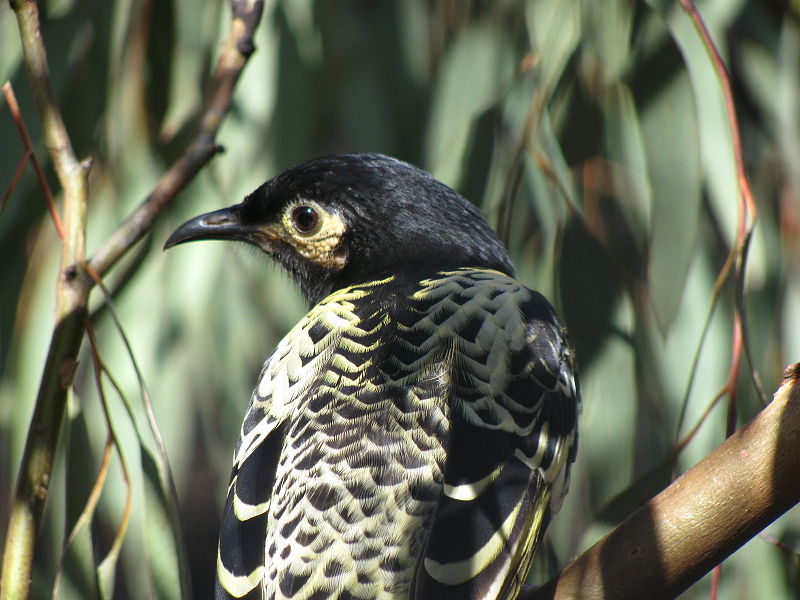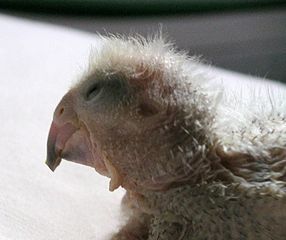 The recently published Action Plan for Australian Birds, 2010 covering all Australian birds on the IUCN Red Data List, has its share of depressing conservation news, but also offers some hope. As most bird enthusiasts know, a few species of Australian cockatoos are expanding their ranges, but far more are declining or barely holding their own. Less well-known is the fact that several finches are also in serious trouble in the wild, despite being well-established in the pet trade.
The recently published Action Plan for Australian Birds, 2010 covering all Australian birds on the IUCN Red Data List, has its share of depressing conservation news, but also offers some hope. As most bird enthusiasts know, a few species of Australian cockatoos are expanding their ranges, but far more are declining or barely holding their own. Less well-known is the fact that several finches are also in serious trouble in the wild, despite being well-established in the pet trade.
Past and Present Statistics
Since European settlers arrived onAustraliain 1788, 2.2% of the continent’s birds have become extinct and 11.8% are threatened with extinction. As so many of Australia’s birds are found nowhere else on earth and have no close relatives, the situation is especially critical.
While certain recent conservation measures have helped, 4 species have been added to the critically endangered category since the last Action Plan for Australian Birds was released (“critically endangered” birds face a high risk of extinction in the wild). The 4 newly designated species include 2 parrots – the Western Ground Parrot and the Norfolk Island Tasman Parakeet – and the Regent Honeyeater and Gray-Headed Albatross.
Additionally, 39 species or subspecies are in greater danger than they were 10 years ago.
Conservation Status Overview
 A review of the report reveals that 27 Australian birds are now extinct. Twenty species, including the Orange Bellied Parrot, are in the critically endangered category. Sixty-eight species are listed as vulnerable and 63 are considered to be near-threatened.
A review of the report reveals that 27 Australian birds are now extinct. Twenty species, including the Orange Bellied Parrot, are in the critically endangered category. Sixty-eight species are listed as vulnerable and 63 are considered to be near-threatened.
Good News
On the bright side, 7 species have been down-listed (meaning that populations have risen) since the last report. The Gouldian Finch is among these. Unfortunately, however, this multi-colored pet trade favorite is still near threatened in the wild, but at least the outlook for its survival is improving. Other well-known birds that seem to be recovering are the Tasmanian Wedge-Tailed Eagle and the Southern Cassowary.
Mixed News
Australia’s diverse habitats have given rise to many genetically distinct subspecies of birds. While often superficially resembling others of their kind, subspecies possess unique traits and their conservation must be managed individually.
In some case, one subspecies was found to be thriving while another is in dire straits or even extinct. For example, individual Double-Eyed Fig Parrot subspecies are listed as endangered and of least concern. The Star Finch is well-established in captivity and in some parts of its range, but the southern population is classified as critically endangered.
Some Key Problems
Many of Australia’s rare birds face threats along their East Asian migration routes, where the protections afforded in Australia may be lacking or unenforced.
Within Australia, predation and competition from introduced species is a major reason for native species declines, as has been the case for centuries. Livestock grazing also continues to degrade habitats and displace birds (some cockatoos, however, have exploded in numbers around ranches due to the increased availability of food and water).

Further Reading
Action Plan for Australian Birds (full text)
You can purchase a copy of the Action Plan here.
Camera Traps Reveal Predation on Keas (with video)
Regent Honeyeater image referenced from wikipedia and originally posted by Incandescent
Star Finch image referenced from wikipedia and originally posted by Aka
Western Ground Parrot image referenced from wikipedia and originally posted by Brent Barrett
 That Bird Blog – Bird Care and History for Pet Birds
That Bird Blog – Bird Care and History for Pet Birds




Good overview of Australia’s conservation status. Thanks for the update!
Hello Amy
Thanks for your interest and kind words. Here’s another on parrot conservation in that region.
Please let me know if you need any further information. Good luck, enjoy and please keep me posted.
Best regards, Frank Indiviglio.